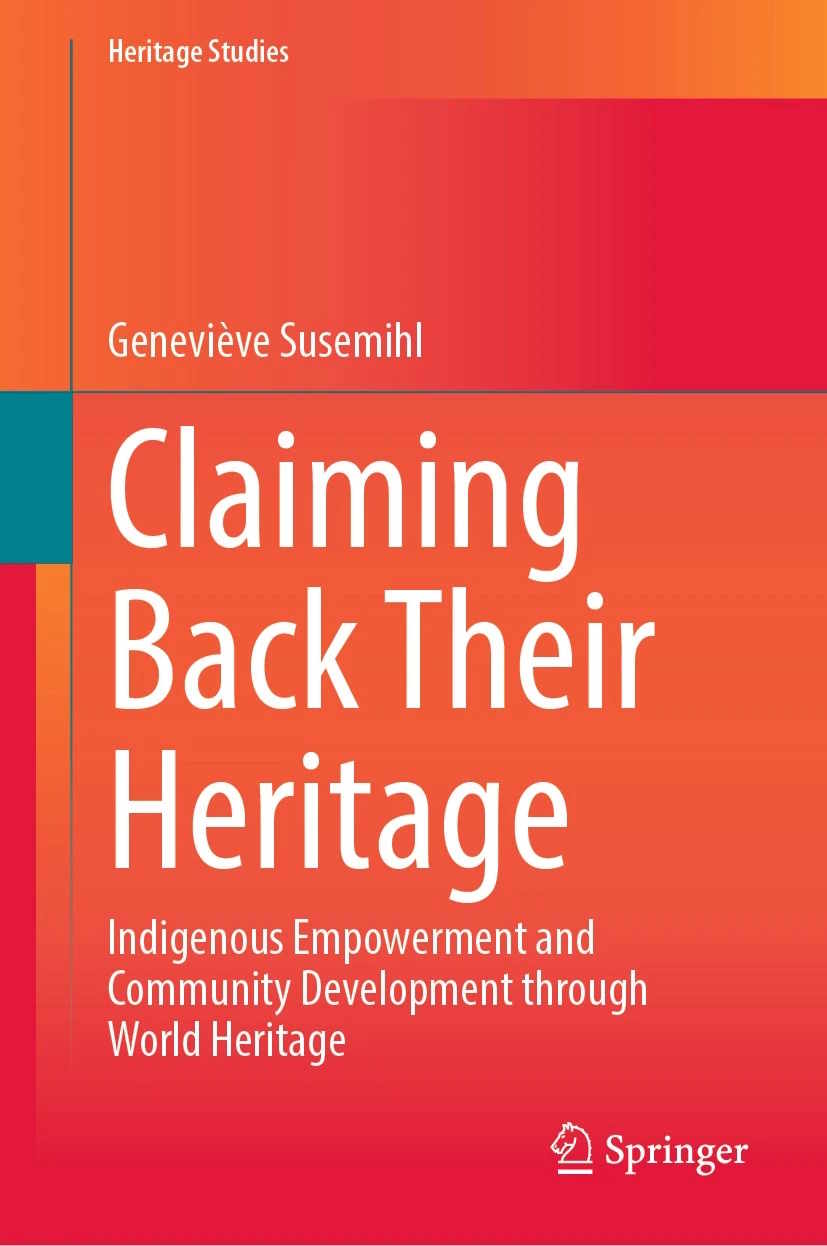
Geneviève Susemihl
Das Buch setzt sich mit der Funktion kulturellen Erbes in der Identitätsbildung und der Entwicklung von Agency indigener Gruppen in Nordamerika auseinander. Anhand der drei Fallstudien von Head-Smashed-In Buffalo Jump, SGang Gwaay und Gwaii Haanas sowie Tr’ondëk-Klondike wird untersucht, inwieweit indigene Gruppen bei der Verwaltung von und Repräsentation durch Welterbestätten Stimme und Sichtbarkeit besitzen, wie sie ihr kulturelles Erbe nutzen und wie die Interessen indigener Gemeinschaften mit denen einer breiten Öffentlichkeit in Einklang gebracht werden können. Basierend auf ethnografischen Feldstudien und narrativen Interviews zeigt die Autorin, wie die First Nations die Anerkennung ihrer Kollektivrechte zur Bewahrung ihres kulturellen Erbes und ihrer Rechte auf politische, wirtschaftliche, kulturelle und soziale Selbstbestimmung geltend machen. Die Präsentation indigener Stimmen sowie die komplexen Debatten über indigenes Kulturerbe machen das Buch für Fachleute und Studierende gleichermaßen interessant.
Schlüsselbegriffe: Weltkulturerbe; Indigenes Erbe; Management von Kulturerbe; Postkolonialismus; Diskurse zum Thema Kulturerbe; Erinnerung; Kulturlandschaft; Museum; Indigene Museologie; Indigenes Empowerment und Kompetenzentwicklung; Community-Entwicklung; Head-Smashed-In Buffalo Jump, SGang Gwaay und Gwaii Haanas; Tr’ondëk-Klondike; Erwartungen der Besucher; Tourismus; Gemeinschaftskapazität; Repatriierung; Versöhnung; Wissen, Weltanschauungen und Erbe der Indigenen.
Download: Buchflyer (PDF)
Das Buch bei springer.de: https://link.springer.com/book/10.1007/978-3-031-40063-6. Veröffentlicht 2023.
Die vollständige Serie “Heritage Studies Series“ auf springer.de.
INHALT / TABLE OF CONTENTS
1 Introduction
2 Ideas, Concepts and Uses of Heritage
2.1 Discourses of Heritage
2.2 Uses of Heritage as a Cultural Concept and Process: Identity, Memory, Place
2.3 The Concept of World Heritage: UNESCO and Canada
2.4 Landscape as Heritage
2.5 Heritage and Museums
2.6 The Heritage Industry: Tourism and Management
3 Empowerment and Community Develop-ment through Heritage
3.1 Empowerment, Capacity Building and Community Development
3.2 Community Participation and Engagement
3.3 Building Community Capacity: Indigenous Models and Strategies
3.4 Connections and Constellations: Indigenous Knowledge, Worldviews, Heritage
3.5 Indigenous Rights and Interests: Heritage, Language, Culture
3.6 A Framework for Heritage Use and Community Development
4 Consultation and Communication: Head-Smashed-In Buffalo Jump
4.1 The World Heritage Site of Head-Smashed-In Buffalo Jump
4.2 The Blackfoot and the Buffalo: History and Culture of a People and a Place
4.3 Operation and Ownership of Head-Smashed-In Buffalo Jump
4.4 The Interpretive Centre
4.5 “It’s All Part of the Story”: Blackfoot Voice in Narratives and Storylines
4.6 Looking for “Authentic Indians”: Visitors’ Expectations and Education
4.7 “Claiming the Site as Their Own”: Indigenous Involvement at HSIBJ
4.8 “The Place is Part of Us”: Building Community Capacity for the Future
5 Collaboration and Cooperation: SGang Gwaay and Gwaii Haanas
5.1 The World Heritage Site of SGang Gwaay and Gwaii Haanas
5.2 The Haida of Haida Gwaii: History and Culture of a People and a Place
5.3 Collaboration and Control: A Model for Cooperative Management
5.4 “Celebrating the Living Culture of the Haida”: Representation and Repatriation at the Haida Heritage Centre and the Haida Gwaii Museum
5.5 “They Realize Who We Really Are”: Tourism and Resource Management
5.6 Community Commitment and Communication: Programs and Learning
5.7 “That Which Makes Us Haida”: The Haida Language
5.8 “Equals on All Levels”: A Way into the Future
6 Indigenous Independence, Resilient Relations: The Tr’ondëk-Klondike
6.1 The Proposed World Heritage Site of Tr’ondëk-Klondike
6.2 The Tr’ondëk Hwëch’in: A History of a People and a Place
5.3. Management, Ownership and Protection of the Tr’ondëk-Klondike
6.4 Visitors’ Views and Resource Management: Klondike Tourism and Mining
6.5 Representing and Interpreting the Tr’ondëk-Klondike
6.6 Custodian of a Living Heritage: The Dänojà Zho Cultural Centre
6.7 Community Commitment: Education and Heal-ing through Heritage
6.8 “To Tell A Balanced Perspective”: The Future of Tr’ondëk-Klondike
7 Conclusion
Weitere Ausgaben aus der Reihe Heritage Studies
- Cultural Heritage Protection in Korea – Contents of Law and Policy and their Changes in Relation to International Conventions
- Handbook on Intangible Cultural Practices as Global Strategies for the Future
- Dance Practices as Research – Approaches to the Safeguarding and Transmission of the Intangible Cultural Heritage of Dance
- 50 Years World Heritage Convention: Shared Responsibility – Conflict & Reconciliation
- Ein Metamodel für Kulturerbe-basierte Stadtentwicklung – Aktivierung von nachhaltiger Entwicklung durch städtisches kulturelles Erbe
- Intangible Cultural Heritage and Sustainable Development: The Valorisation of Heritage Practices
- The UNESCO Memory of the World Programme: Key Aspects and Recent Developments
- Going Beyond – Perceptions of Sustainability in Heritage Studies No. 2
- Perceptions of Sustainability in Heritage Studies
- 40 Jahre Welterbekonvention
- Understanding Heritage
